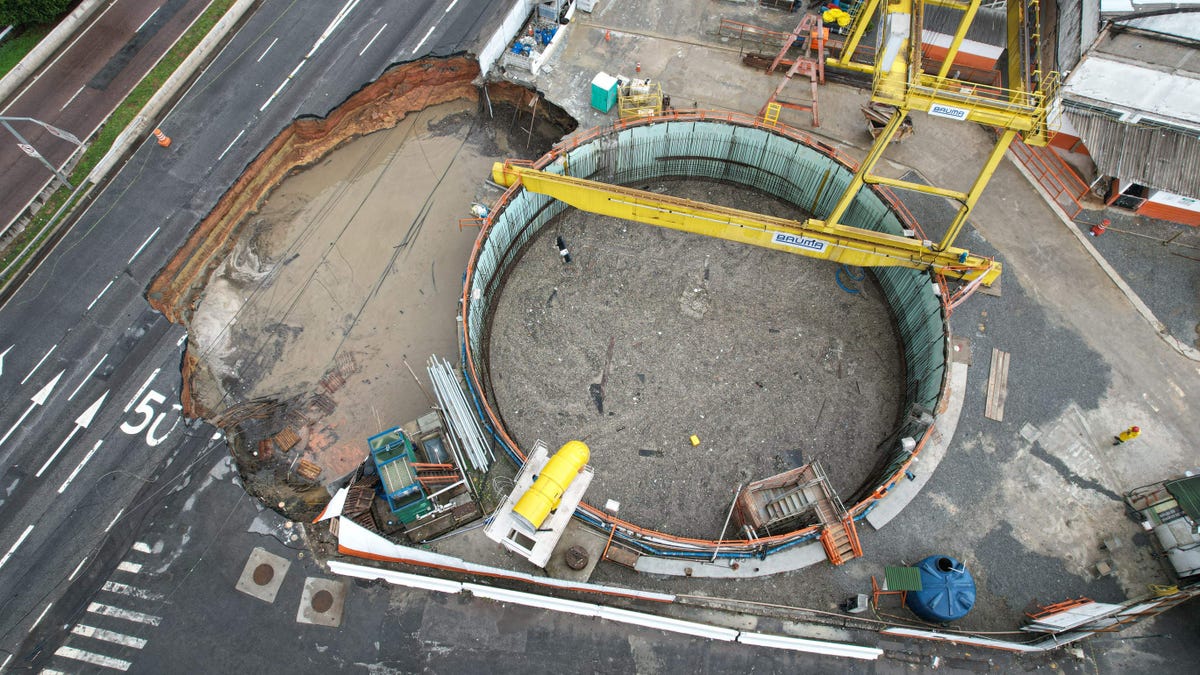São Paulo Subway Tunnel Project Floods And Collapses Roadway

Photo: Filipe Araujo/AFP (Getty Images)
Public transportation infrastructure projects in heavily populated areas can be costly and lengthy endeavors. For example, New York City’s Second Avenue Subway took a decade to complete the line’s first phase, with the rest of the project still under construction. Delays can be caused by numerous variables, from funding shortfalls to equipment failures. Though, São Paulo, Brazil has somehow found a way to raise the bar.
The São Paulo Metro is currently building Line 6. The 9-mile line is intended to connect a northern district of São Paulo with the center of Brazil’s largest city. This line was initially supposed to take four years to construct and open in 2012. A recession delayed the start of construction until 2015, but it had to be halted only a year later when financing from a state-owned development bank fell through.
Construction seemed to have restarted for the final time when São Paulo’s state government entered a public-private partnership with Acciona, a Spanish infrastructure conglomerate. Acciona was expected to complete the tunnel by 2025. I say “was” because a section of the tunnel collapsed earlier this week.
The collapse caused the tunnel and an access pit to flood with what is believed to be either sewage or river water. The site of the collapse is near the banks of the Tietê River. All the workers on site were able to evacuate. Though, two people had to be treated after coming into contact with contaminated water. The incident also caused the terrain around the access pit to subside, including part of the Marginal Tietê expressway.
Despite the incident being under investigation, officials are already pointing fingers at each other. In a press conference, São Paulo’s governor said Acciona had hit the sewage system while tunneling. Acciona’s director in Brazil quickly countered the governor’s statement, saying, “We are looking for the causes now. It probably has to do with the rains, with erosion, because the tunneling machine was three meters away from this collector, so there was no collision.”
São Paulo has recently seen heavy rains cause widespread flooding and landslides. With that in mind, it wouldn’t be out of the realm of possibility that saturated soil just gave way and took the sewer out with it into the tunnel. We won’t have a definitive answer until the investigation concludes.



